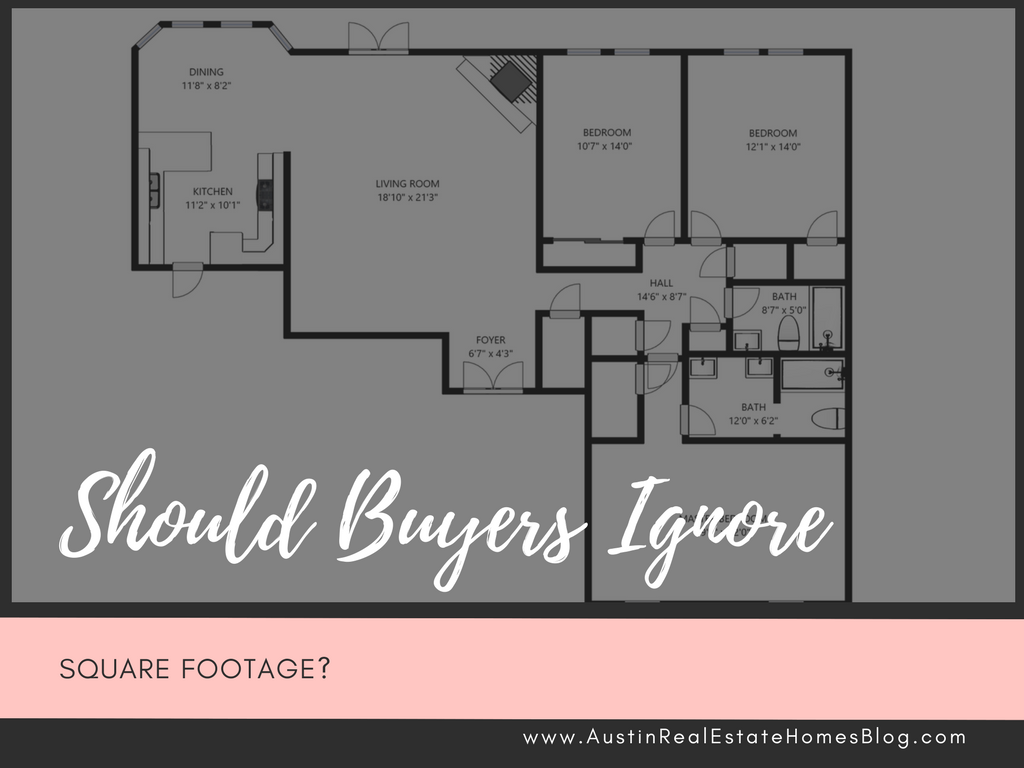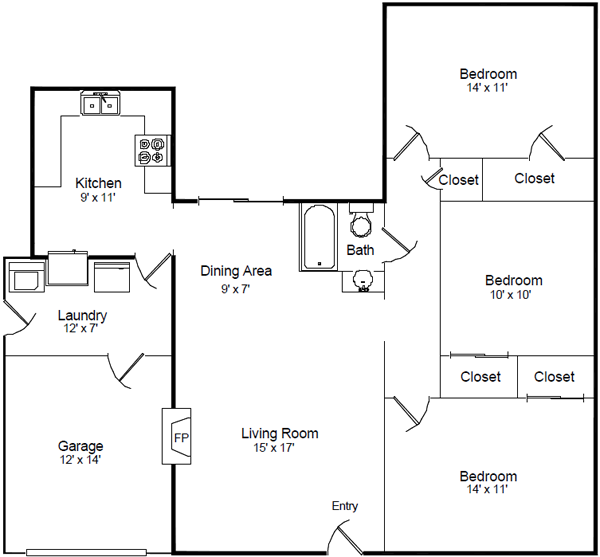
Square footage is one of the metrics most buyers focus on when buying a home in Austin. They think about the places they’ve lived, how big they were, and come up with an arbitrary number as to the minimum square footage they can live in. Though this works to a point, it is not a foolproof way to determine what size house you need and it might lead to you missing out on a house that would be perfect for you. Here’s why I tell all my buyers to ignore square footage.
Everyone Measures Square Footage Differently
There are so many ways to measure square footage. Appraisers will measure the exterior of the home and come up with gross square footage. Some will only include walkable spaces in their square footage count. The tax records might have the original square footage when the house was permitted, but didn’t get updated when the previous owner put an addition on the house. Then again, the owner could measure square footage and add spaces like a converted garage, even when it functions more as a garage.
Square Footage is More of an Opinion than an Exact Science
You can talk to four different people and get four different answers to the question, how many square feet does this house have? The MLS only has one field to enter square footage and you don’t always know how it was calculated. When something can vary this much, it is difficult to use it as a hard, fast metric.
Square Footage Does Not Always Indicate How You’d Live in the House
I have seen many 3,000 square foot homes that live like 2,000 square foot homes because of the way it is laid out. If the square footage is in areas that you wouldn’t use or value, it makes no difference how many square feet it has. To that same point, I’ve seen 1,500 square foot homes that live like 2,000 square foot homes because there is no wasted space. Again, this is all subjective. How I i would live in a house would be different than how you would live in a house. We could both see the same house and come up with two different conclusions about the layout.
Floor Plan and Bedrooms and Baths Might Be a Better Indicator
 Instead of focusing on square footage, focus more on floor plans, bedrooms and bathrooms, which are a better indicator of how you’d live in the house. For example, if you are looking at a 1,500 square foot house and 600 square feet are in the kitchen that might be wonderful for someone who likes to cook or entertain. But, for someone who can barely microwave and uses their kitchen to store take out containers, a big kitchen is wasted square feet. When looking for a house that fits your families needs, focus on the home’s floor plan and if it has enough bedrooms and bathrooms.
Instead of focusing on square footage, focus more on floor plans, bedrooms and bathrooms, which are a better indicator of how you’d live in the house. For example, if you are looking at a 1,500 square foot house and 600 square feet are in the kitchen that might be wonderful for someone who likes to cook or entertain. But, for someone who can barely microwave and uses their kitchen to store take out containers, a big kitchen is wasted square feet. When looking for a house that fits your families needs, focus on the home’s floor plan and if it has enough bedrooms and bathrooms.
When Square Footage is Helpful
Square footage is helpful in ruling out homes that are clearly out of reach. For example, if you are looking for a 5,000 square foot home, you can safely eliminate 2,000 sq ft homes. But, you might not want to eliminate 4,700 sq ft homes, as they might live better than 5,200 square foot homes.
For Best Results – Give Yourself a Square Footage Buffer
If you think 1,500 square feet is the minimum you could live in, try using 1,300 or 1,400 square feet as your minimum. That’s not saying you have to buy a home that’s 1,450 square feet if it doesn’t suit your needs, but you want to be notified when a 1,450 square foot home in your ideal neighborhood is listed so you can evaluate.
Considering Buying a Home in Austin?
We are experienced buyer’s agents and can help make your home search effective, worry free and fun. We have a combined 60+ years of experience representing buyers and have strategies for every step of the process – including how to save you money on your purchase – even in this strong seller’s market. Check out our Austin Home Buyer section to learn more about our home buyer representation program. Then fill out our Buyer Survey, call us at (512) 827-8323 or email info@11OaksRealty.com to schedule a no obligation consultation.
Leave a Reply